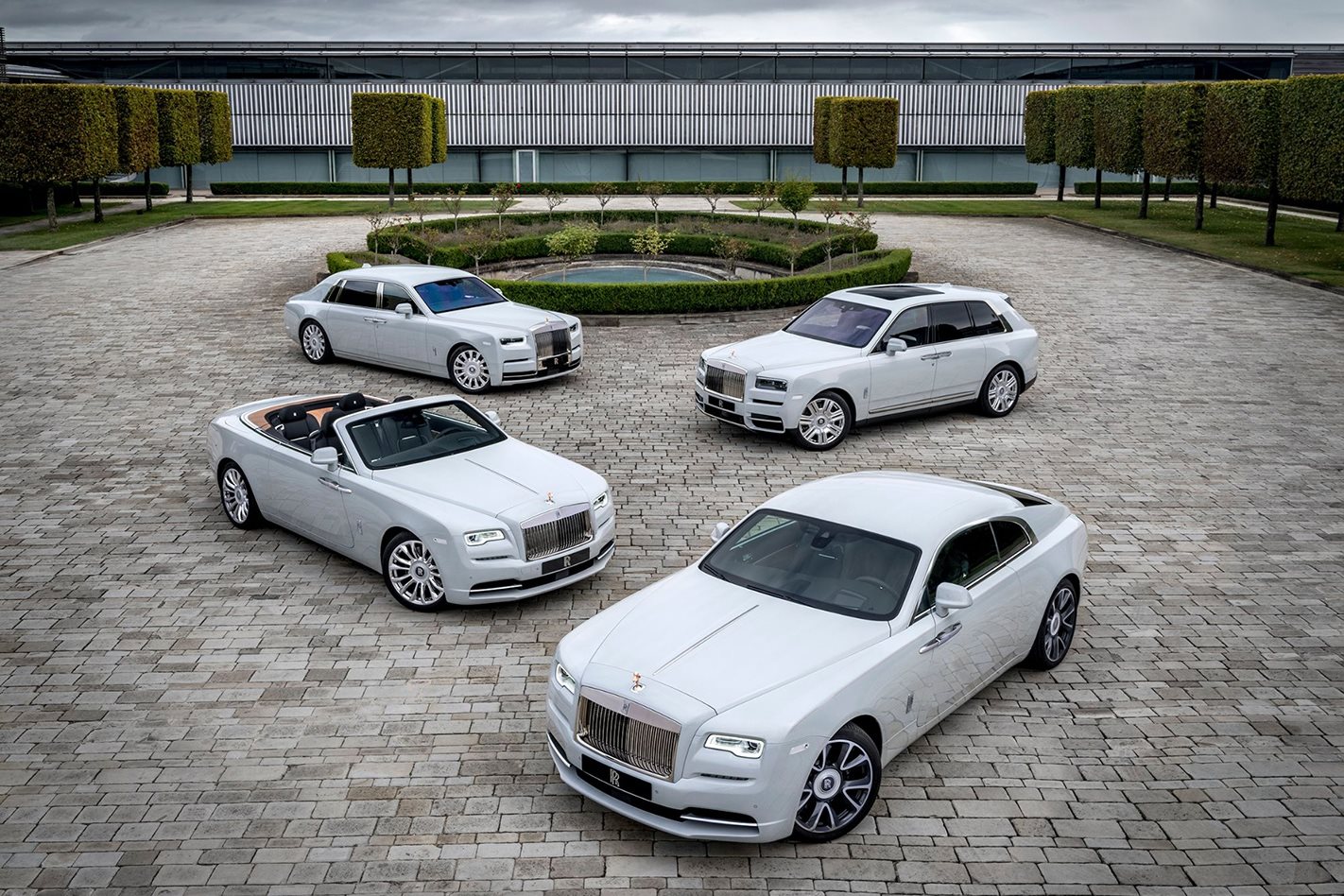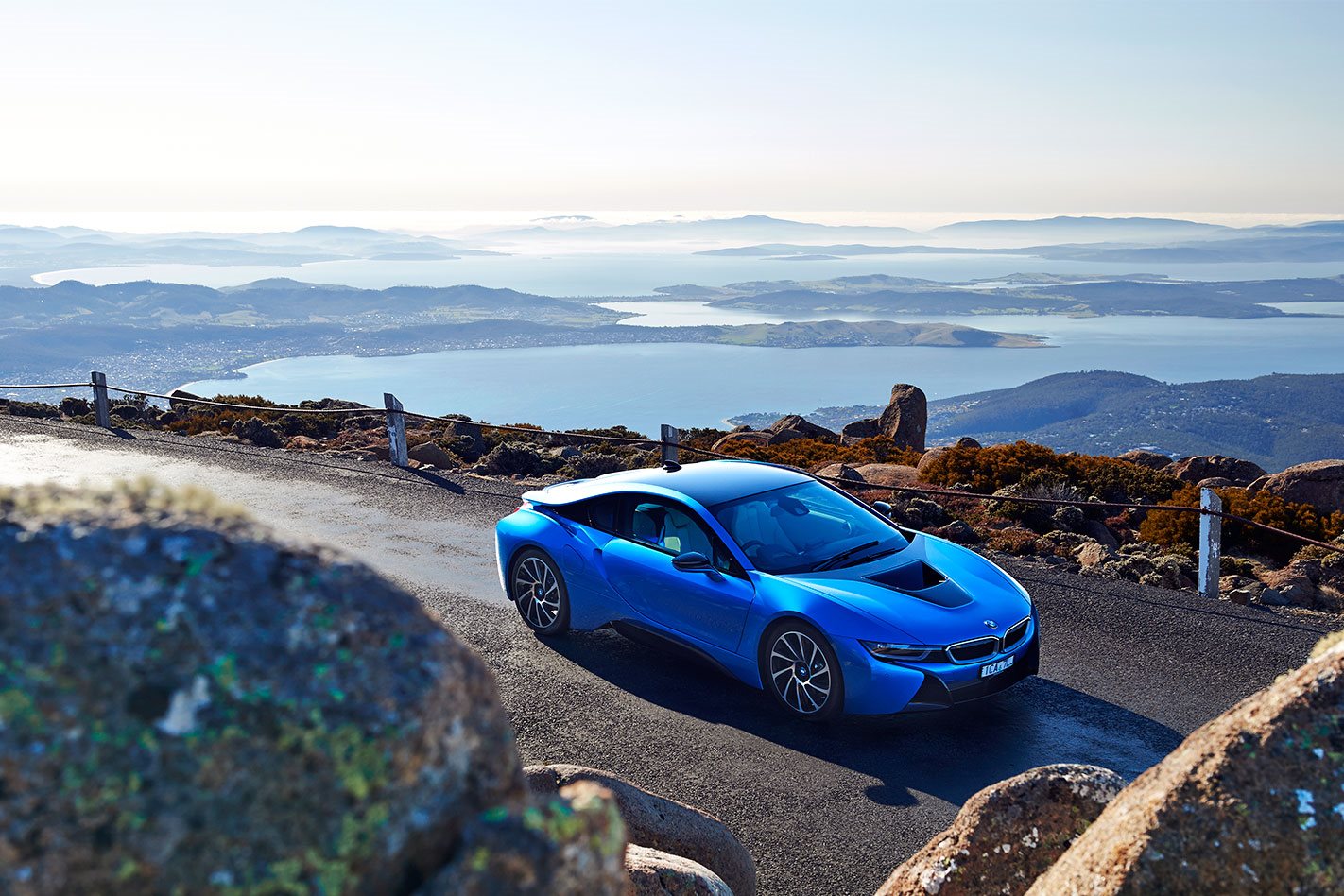
The giant tapered blades of the towering wind turbine rotate gracefully, aided by the fearsome wind that relentlessly batters the north-west coast of Tasmania.
I’m standing 100 metres below, gazing at this amazing piece of engineering and admiring those mighty blades in all their carbonfibre-reinforced plastic beauty. The wind pattern that causes them to rotate is called the Roaring Forties (as in 40 degrees south of the equator). It pushed ships across the Pacific in the age of sail, but is now making energy that can power the vehicle that I’m standing next to. I wonder what the old sea dogs would have thought about that.
The view out over the bright blue ocean is mesmerising and the rolling green hills are pretty, even with these man-made turbines reaching up into the clear sky. We mainlanders can easily forget how stunning Tasmania is, especially its exquisite beaches and dense forest expanses.
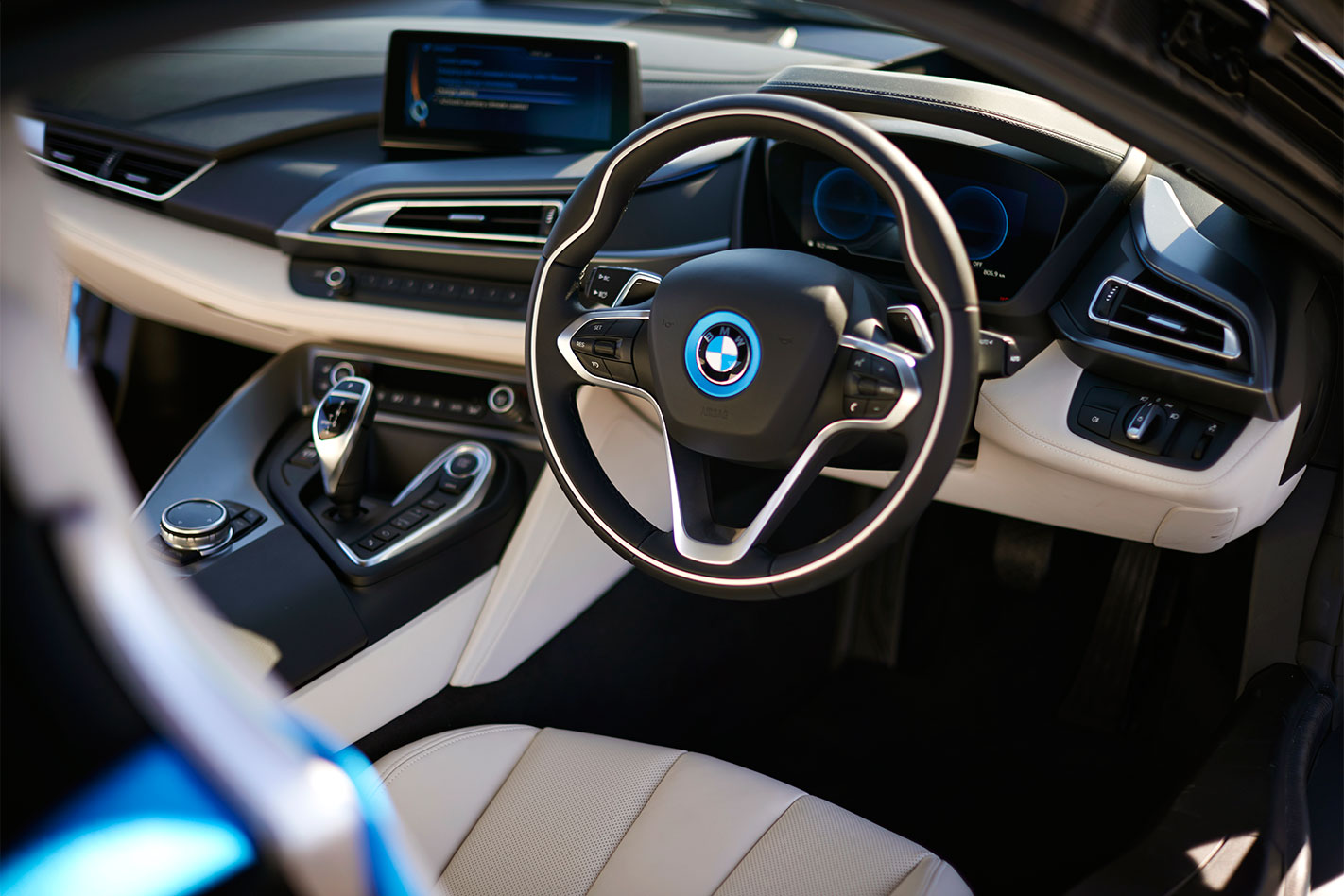
You could spend weeks looking at the scenery, but we can’t. After all, we have arguably the most important supercar of the decade at our disposal and hundreds of kilometres of Australia’s best roads before us.
I lift up the beautifully shaped wing door that, along with much of BMW’s i8, is also made from a mixture of plastic and carbonfibre, and drop into the cabin. So, this is what the future feels like.
“When do you reckon they will start making this then?” asks aged mechanic Neville Rodman, taking a break from working on a Datsun 120Y at his garage just out of Hobart. “They already are. This is a production car,” I reply, to his amazement.
His surprise is understandable; the i8 belongs in another dimension. It is so different to anything else on the road, especially here in Tasmania, where old cars survive in the wild for much longer.
I first saw the i8 three years ago, when it was revealed along with the i3 eco hatch. There was much fanfare at that Frankfurt Motor Show presentation. With all the pyrotechnics, interpretive dance routines and marketing horseshit about ‘visionary mobility’, it was easy to dismiss the swooping sports car on the stage as just another unrealistic concept.
Perhaps a little cynical after witnessing countless of these mind-sapping presentations, I fully expected the i8 to be watered-down along the development process until it arrived in showrooms a shadow of the show car, with hardly any of the technology it showcased. But the i8 I’m a sitting in is very real and virtually identical to that Frankfurt car.
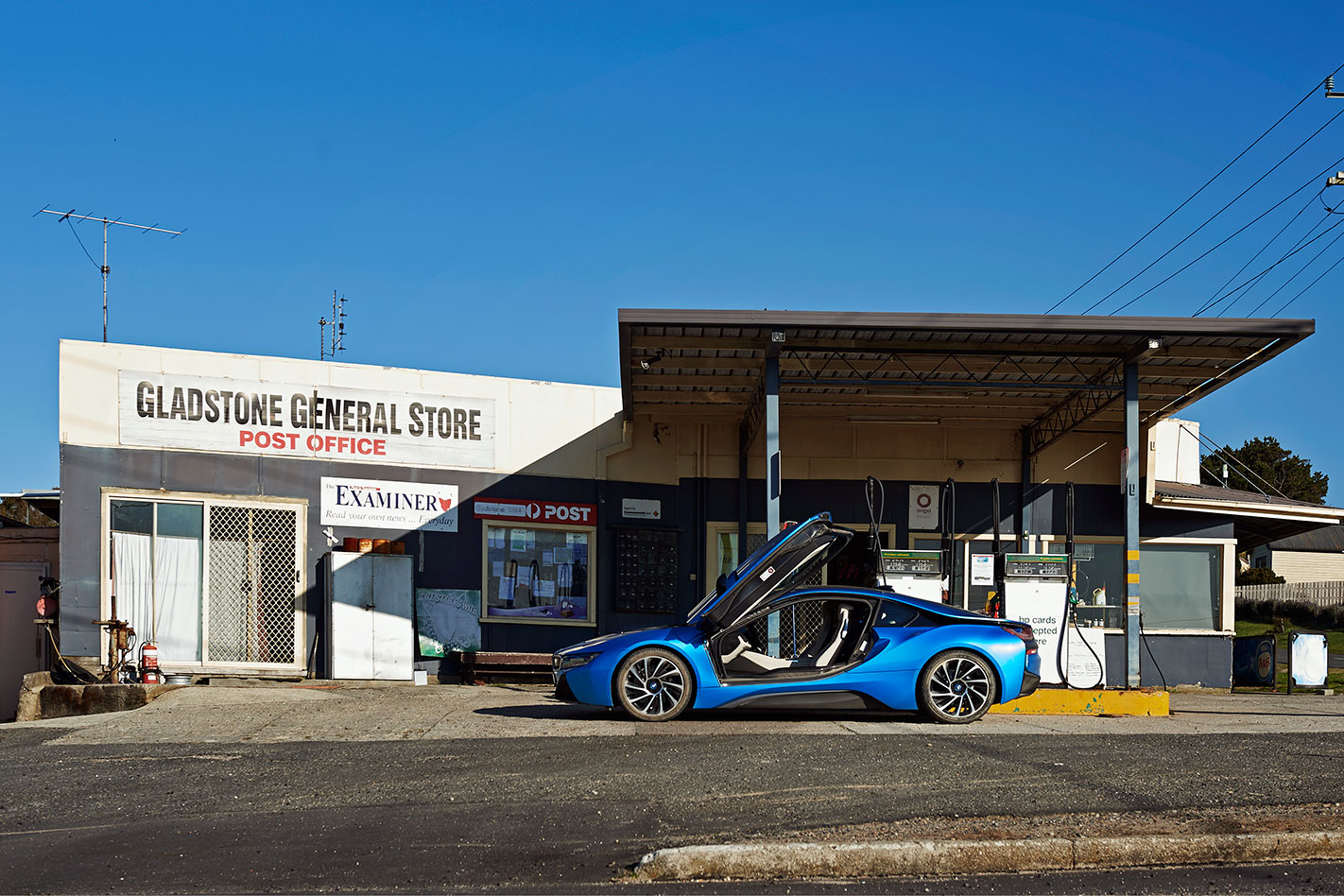
It’s not easy to explain exactly what it is, though. The term plug-in hybrid sports car is technically accurate, but the i8 is more complex than that, as I discover on some of the roads just out of Launceston that are used for the annual Targa Tasmania tarmac rally.
A turbocharged 1.5-litre three-cylinder engine sits behind and below, powering the rear wheels. That hardly sounds enough to challenge a Porsche 911, but there is also an electric motor at the front, which draws power from a (7.1kW/h) lithium-ion battery pack sitting where a transmission tunnel would normally be, and sends it to the front wheels.
These systems don’t necessarily work at the same time, though. If there is enough juice, the car can operate using only the electric motor, making it the fastest-looking front-drive coupe in the history of the planet. The range, if the battery has been fully charged, is 35km. So, if you lived close to work, or your work had an accessible power plug, you could drive there and back without using any fossil fuel.
When the battery is near empty, the petrol engine kicks in. The i8 can operate with only the petrol engine running, but the hybrid system allows the battery to be topped by the petrol engine and it can also gather up energy when the car coasts or brakes.
This means that most of the time the electric motor can add additional power, turning the vehicle into an all-wheel-drive slingshot when you nail the accelerator.
To be honest, all of this is a little overwhelming as I try and comprehend exactly what all the various systems are doing at the start of the drive. I make a truce with myself to not worry how the i8 is working for now, simply to enjoy its work.
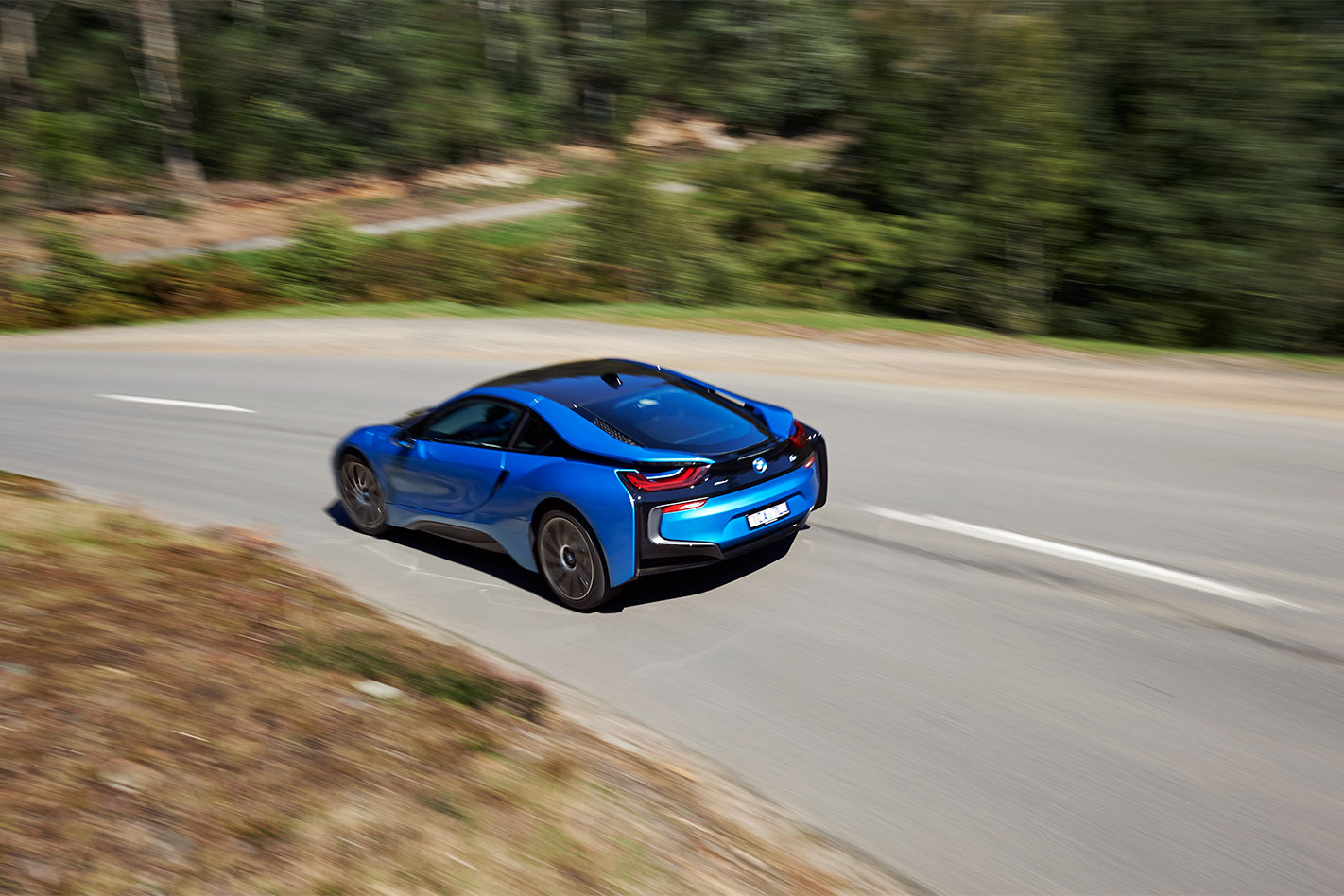
The open road starts to twist and turn as we enter one of the best Targa roads, the infamous Sideling stage not far from Launceston, which has ended the campaigns of many racers over the years. Rocks protrude from the banks just inches from some of the corners, frighteningly close to the front quarter of the only i8 in Australia, which retails at $299,000.
The long and low machine is incredibly eager to dive into the tight bends and it takes very little movement of the wheel to change direction. Its body feels remarkably rigid, like it is carved from stone. It isn’t, BMW engineers instead opting for carbonfibre, which is around 30 percent lighter than aluminum. The doors and boot are CFRP, while the roof is carbonfibre and the bonnet is aluminum.
It all sits on a subframe that, along with most of the suspension components, is made from aluminium. These lightweight materials are crucial to prevent the i8’s weight from soaring under the impost of the notoriously heavy battery pack and electric motors.
As it stands, the i8 is 1560kg, some 100kg heavier than the entry-level Porsche 911. Much of that bulk sits low and BMW says the i8 has the lowest centre of gravity of any of its cars.
Despite all this, the i8 still feels a tad heavy in corners, and on the way out. It sits flat, thanks to a well tuned suspension package with hydraulically controlled variable valves and regular 20-inch tyres (it seems there will be no run-flats in the future, folks).
It’s great at eight-tenths, but push harder and the i8 falls away a little. It’s not as sharp as the 911, with a tendency to give up front-end grip when pushed to the limit. Even with the stability control flicked off, the i8 won’t naturally step out at the back. Helping to steer through the bend, with just a little rear-wheel slip, is not an option, either.

The corners start to open up and we arrive in the small town of Scottsdale. There’s a sausage sizzle at the local hall and one pass with the windows down is enough to make us stop. The nanas cooking the snags are very impressed. “Park it over here so we can look at it,” says one older lady, who admits to driving around town fast in her Alfa.
No longer famished, we head out to find the Musselroe wind farm, take several wrong turns and end up stumbling across one the of the most fantastic stretches of beach in Australia. If the water wasn’t colder than a yeti’s Esky, I’d be in there straight away.
We hit several more Targa stages after visiting the wind farm and I get more comfortable with the i8. I’ve found a graphic for the dashboard screen that shows what the each power unit is doing. That helps, but it’s still not completely clear what it will do in each corner, how much power will go forward and how much will go to the rear.
It does punch hard out of the bends, with both electric and combustion power, although it doesn’t feel quite as fast as a 911 or an Audi R8. The electric motor makes 250Nm and 75kW (96kW for short bursts) and the petrol engine is good for 320Nm and 170kW.
I don’t doubt the official sprint time of 4.4sec, which pips the Porsche, but the i8 is stronger from a start than when it is rolling. This is because of the immediate torque of the electric motor, as well as the fact the electric motor has a two-speed automated gearbox. From rest, it takes off in first, a gear it doesn’t use any other time, and this helps it launch hard.
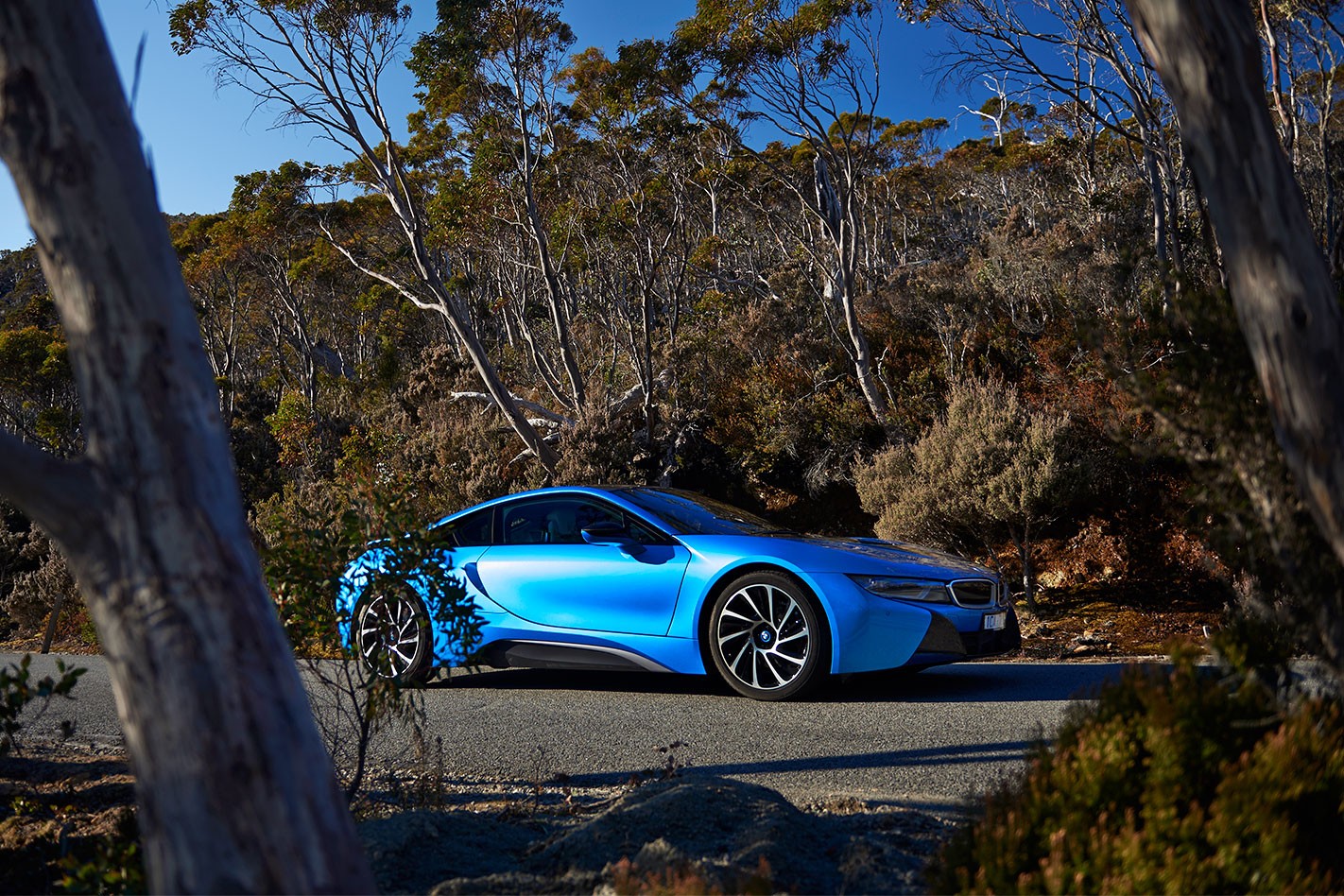
We carve our way through some of Tasmania’s lush forests, which have become a battleground for those who want to hug the trees and those who make a living from chopping them down. An historic peace deal that led to protection of vast areas of forest was signed in 2012, but the newly elected state coalition government has promised to re-open 400,000 hectares for logging with support from PM Tony Abbott, who says “we have too much locked-up forest”.
After more than 600km of winding roads, we arrive on the outskirts of Hobart and I flick the i8 into electric-only mode. This is a strange experience. A sports car so imposing making no noise apart from a slight whirring sound as it fires away from the traffic lights. The performance in EV mode is more than enough in the city, and it’s relaxing.
We give it a clean and wash off some of the bugs that have sacrificed themselves on the i8’s nose and are soon approached by a young bloke named AJ. He politely asks for permission to stare at the car and take photos. AJ is in awe. He just loves it, even before he sees the fold-up doors that just add to his fervor. Our new friend details all the supercars in Hobart, but reckons this is by far the most impressive.
AJ is not alone. The i8 causes a stir wherever it goes. Heads flick quickly as we pass at speed and smartphones are produced at record speeds to provide photographic evidence for friends.
It’s fun to study people’s faces as we pass. Some look excited, some point, and others, especially in the really small towns, just freeze with faces like stunned mullets, wondering what the hell has just arrived from another galaxy.
The designers really have come up with something special. Its complicated but aero-friendly rear end is a bit of a mess, but it gets a free pass thanks to its blissful side profile and predatory M1-inspired nose. Then there is the interior. Yes, this is how BMW should do all its cabins.

One admirer says it had the flair of a Citroen and I agree. The shapely lines, the digital dashboard and cool blue mood lighting all veer from the traditional, and often plain, BMW interiors. Sadly, it retains the generic and unintuitive BMW gear-shifter (push forward for reverse and press the side button). It also adds new frustrating chimes, including a two-tone zinger that is guaranteed to drive anyone nuts in seconds.
We head up the long and winding climb to Mt Wellington to soak up the breathtaking views out over the Hobart harbor and coast before choosing the west coast route that will eventually lead back to the airport.
None of these roads are used in Targa, but they are still great fun. I select the Sport mode and watch the instrument cluster flash to red, which must mean the car is going to go faster. The throttle response is sharper, the steering stiffens a little and the exhaust grows louder. There is a reason for this, just as it does with other sporty models, BMW tops up the sound through the speakers.
Is this cheating? The automotive equivalent of photoshopping your thigh-gap? Probably, but it does sound good. The petrol engine makes a nuggety sound, not far off a boxer four or straight five, also imitating a big V8 at lower revs. Get on it and the electric motor adds a noticeable whirr to the mix. It reminds me of the sound of straight-cut racing gears.
An hour later, we pull up at the airport with 1600km on the clock, just in time for my flight. I have flogged this thing for much of the journey and yet the average fuel consumption is just 8.2L/100km, half of what many regular supercars would consume over the same path.
But is it a proper supercar? It certainly looks like one and will cause even more of a fuss than cars like the Lamborghini Aventador. It also qualifies as a technical marvel. But it falls just short of a real supercar.
On these wondrous roads, I would rather be in something more communicative such as a 911 or an R8, with a traditional and responsive naturally aspirated engine. Feel free to call me a dinosaur.
Nevertheless, the i8 is worthy of admiration.After all, it could also point the way for us car nuts to continue enjoying performance that doesn’t literally cost the Earth.
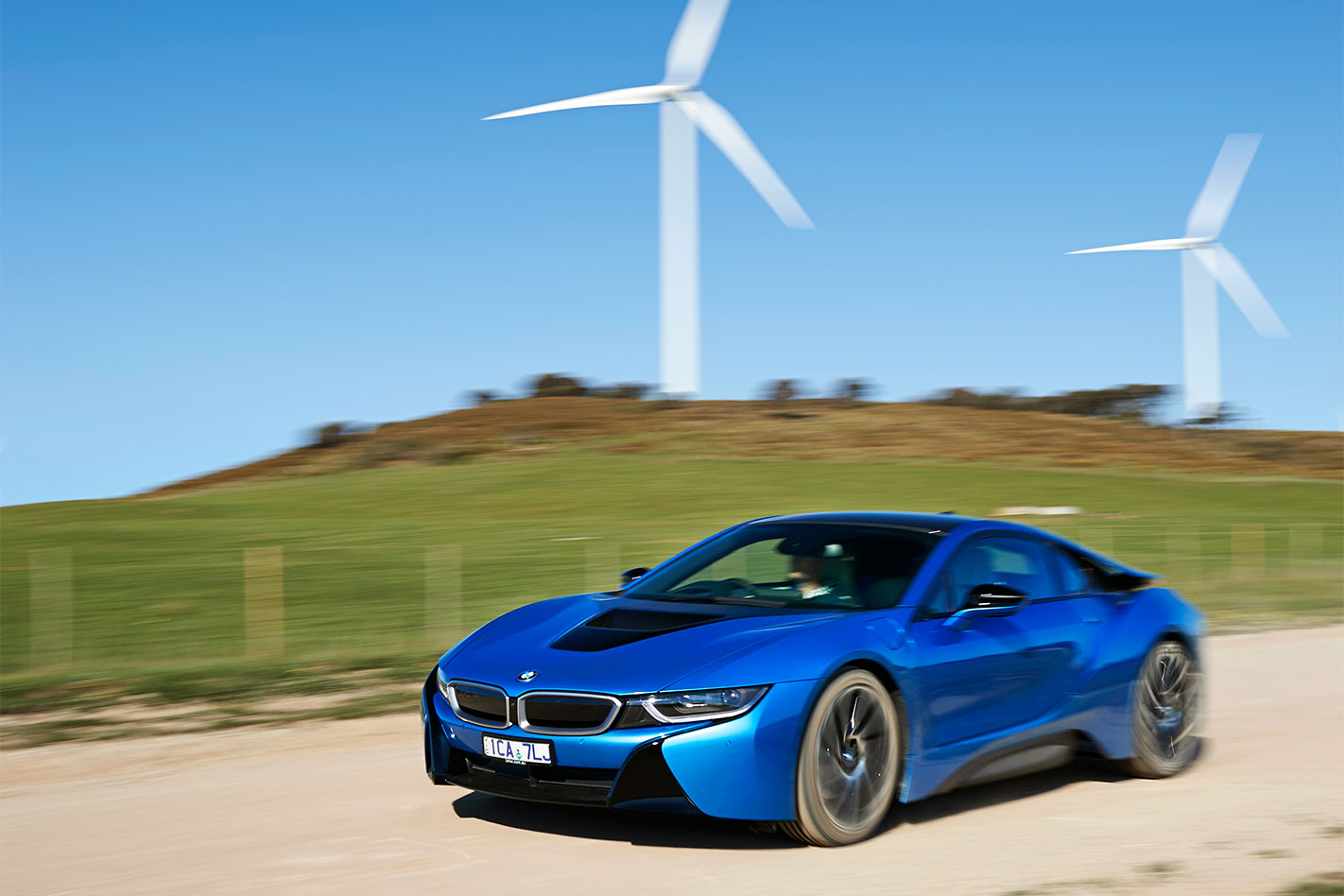
POWER FOR THE PEOPLE Tasmania is by far the greenest state in Australia when it comes to energy production. As a result, it is the place where driving an electric car makes the most sense (from an emissions perspective). Dams collecting water for hydro power plants are not always popular, but Tasmania has many, as well as new wind farms.
Official government figures show that producing 1kW/h of electricity in Tasmania creates just 0.26 kg of CO2, while in coal-addicted Victoria it takes 1.19kg of CO2 to produce the same energy.
Buying green energy, or fitting a solar panel (which would be enough to charge the i8) are also options.
PLUG-INS NOT WELCOME There is a public charge point open to all electric-vehicle motorists in Hobart. Unfortunately for us, it is in Hobart, Indiana.
The American Hobart has a population of just 30,000, but already has a charging point with four sockets, with many more planned.
Hobart, Australia (about 220,000) does have a public charge point, but at the time of writing it is in a Nissan dealership and only for Leaf customers.
We didn’t charge the i8 overnight because we couldn’t find a power plug at the hotel. That’ll show us for shunning a caravan park, with plugs aplenty. Charging the i8 with a regular plug (10 amps) takes about four hours, while a BMW wall charger (16 amps) reduces that to 105 minutes.
HOW GREEN ARE YOU REALLY? Building cars produces CO2 and using lightweight materials, as the i8 does, is even more energy intensive. The CSIRO calculates that it takes just 22.7 Gigajoules of energy to make one tonne of steel, but 211Gj to make the same weight in aluminium. Aluminium advocates like Audi argue that the fact it is three times lighter than steel means fuel savings make up for production emissions.
Carbonfibre production is also energy intensive, with a US university claiming it takes 275GJ per tonne. However, it is also lighter than aluminium. BMW says it uses renewable energy at its US-based carbonfibre production plant to keep a limit on production emissions.
This article was originally published in Wheels November 2014.



